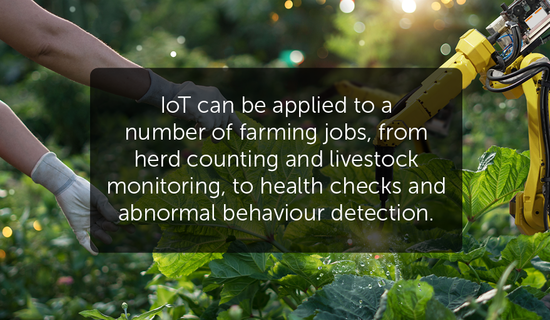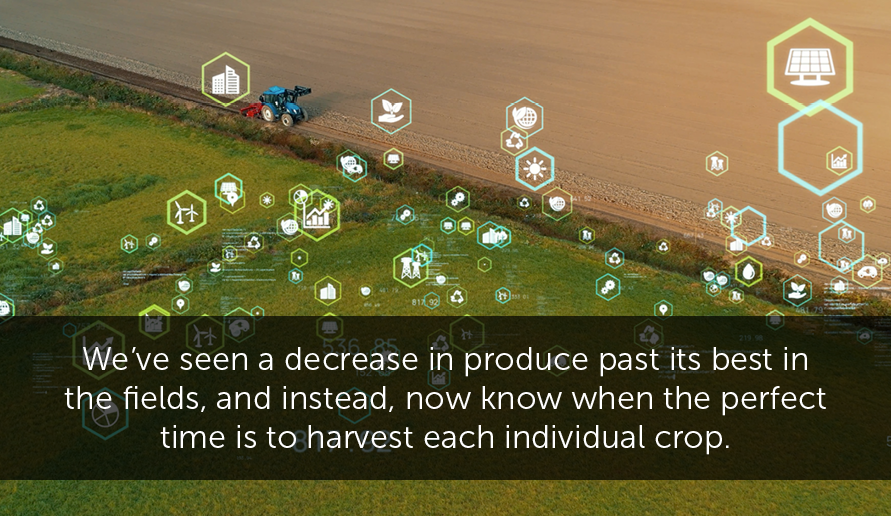Privacy Policy
Cookie Preferences
We use cookies and other tracking technologies to improve your browsing experience on our website, show you personalised content, and analyse our website traffic. Privacy Policy
We use cookies and other tracking technologies to improve your browsing experience on our website, show you personalised content, and analyse our website traffic. Privacy Policy



“There’s no use closing the barn door after the horse has bolted...” But what if you could monitor the barn door from your phone? What if you received an alert that the barn door is open? What if you could track the horse?
What if you were then able to close the barn door, remotely, before the horse bolts? That’d be a game-changer…
“Work smarter, not harder” should be the new motto of the farming and agriculture industry. With new technologies improving farming and agriculture at such accelerated rates, we’ve seen a transformation within the industry in the last few decades.
When thinking of fast-emerging technologies that have the power to change an industry, one tends to think of inventions such as self-driving cars, AI or virtual reality. These seem to be the norm when talking about technology, so how is this relevant to farming and agriculture?
We can see it in the products we buy and the food we consume. With the growth of the Internet of Things (IoT), and devices such as drones, farmers are able to collect vast amounts of data, that would have otherwise been too costly/time-consuming to collect.
Those working in the farming and agriculture industry now have the technology available to them to not only closely monitor their crops and track their growth progress, but also to track and relay the weather conditions, soil quality and livestock health in real-time.
This means that if one of your livestock were to, for example, get an infection you can quickly identify and separate from the rest of the herd before infection spreads (and in a post-COVID world, we’re all too aware of how fast infections can spread).

It's not just crops and livestock that are seeing this revolution, IoT solutions can even be implemented in silos and standalone buildings. Using electrical systems, it is now possible to track the silo levels and send alerts when the level drops too low, or unusual activity is detected.
Implementing IoT solutions can greatly increase both the quality and quantity of crops. IoT devices allow farmers to test the soil quality (both before and after planting), track their crop growth and even deliver fertilizer and pesticide to individual crops.
With this data, not only can we reduce the amount of food waste produced, but we can also better manage current and upcoming food stock, alongside improving the overall quality of the produce.
IoT devices (new drone technology*) allow us to not only monitor the growth rate of crops but also the health and species of any plant or livestock and any diseases. Weather conditions and soil quality are among some of the variables that can be tracked.
Thanks to smart farming, monitoring the ripeness of crops can be done remotely, with real-time information on crop development and growth.
With all this data available, both time and money are being saved on labour costs and product wastage.

It’s now possible, using IoT devices, to receive alerts directly to your phone. You can be notified hourly, daily or weekly on livestock health, drought monitoring, and crop growth progress - or if that bar door is open again!
Smart farming and agritech can help to reduce our environmental footprint. The close monitoring of produce can help decrease the need for chemicals such as pesticides and fertilizers. The automation of processes can speed up tasks such as irrigation and harvesting, saving time, money, and resources.
At CSL, we pride ourselves on providing our customers with reliable and secure connectivity. IoT is shaping and innovating the farming and agricultural industry, and we are excited to be playing our role as its Critical Connectivity Provider.